How LinkedIn Has Degraded as a Content Platform
Executive Summary
- The quality of the content shared on LinkedIn has gone into a steep decline.
- This article will cover the quality of shares being submitted on LinkedIn.
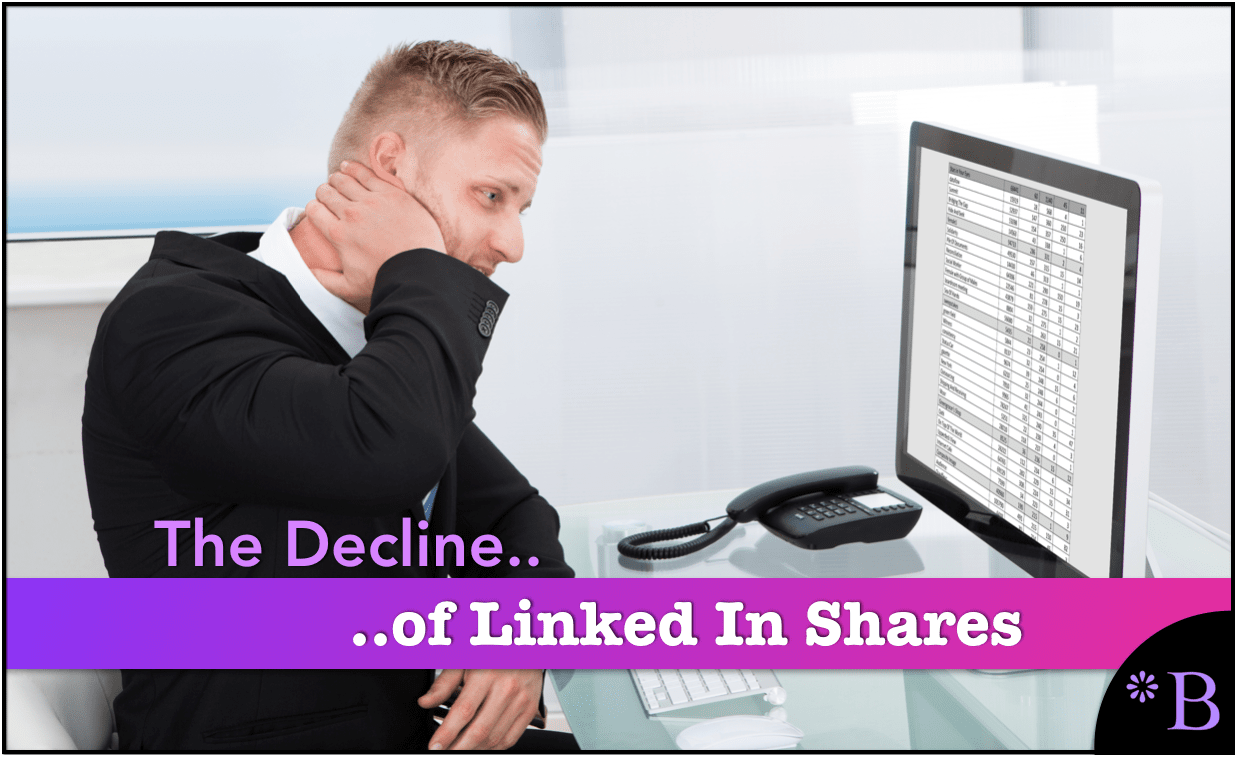
Introduction
Several years ago, LinkedIn began allowing sharing content, which allowed people to either write articles within LinkedIn’s editor — or use a post that showed an introduction, with then a link to a website.
When this occurred, some interesting content was shared on the site. This is before the Microsoft acquisition of LinkedIn. For several years I used LinkedIn to share articles and research. However, over time I and many others began to notice a decline in the quality of the content shared on LinkedIn. However, it was not until I spent time analyzing my feed that I fully figured out how degraded the quality of the content shared on LinkedIn had become.
In this article, I will analyze several examples that were not “cherry-picked” from my feed. These were just typical shares that I found in the feed. These shares tell us something exciting about the current state of content sharing on LinkedIn.
Our References for This Article
If you want to see our references for this article and other related Brightwork articles, see this link.
Analyzing The Shares
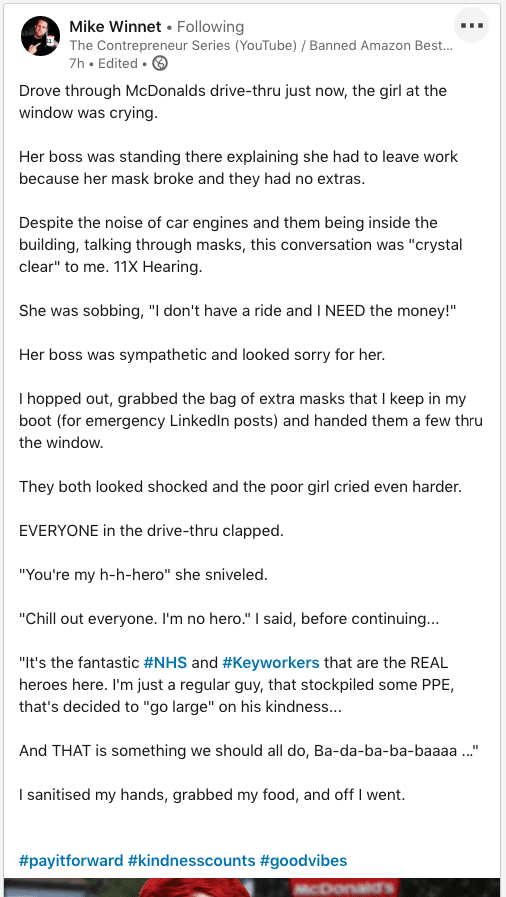
This is a typical virtue-signaling share on LinkedIn. This is incredibly self-indulgent. This not only virtue signals but places the individual sharing as the person who saves the day.
However, the joke was on me. It turns out that Mike Winnet creates these shares to lampoon other virtue-signaling shares.
The problem? The other shares are often so self-indulgent I can’t even differentiate between shares that lampoon these shares and the real shares. I want to apologize to Mike for having his share critiqued — sorry, Mike. However, your share tricked me into thinking it was real proves both of our points.
The response to this ridiculous share was overwhelmingly positive.
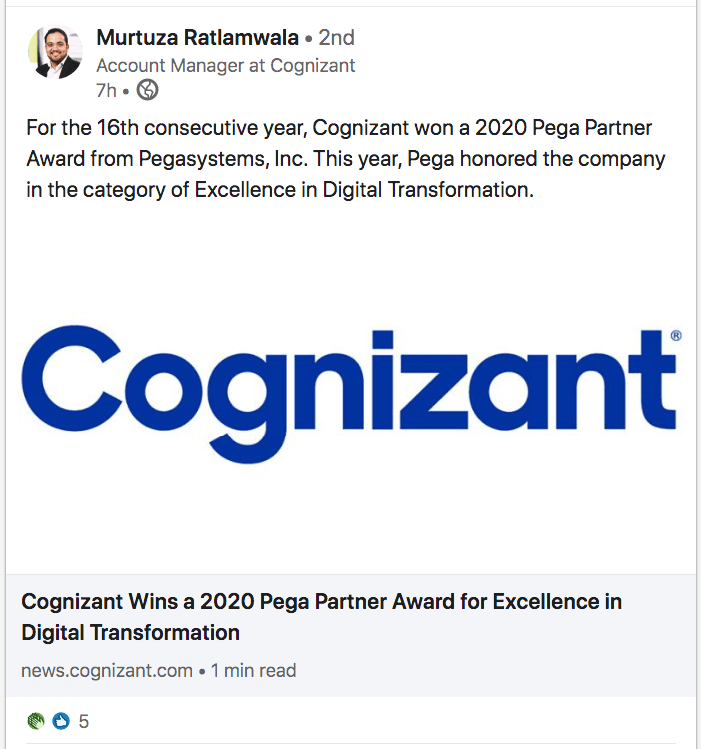
This is a promotional share. Cognizant, an IT consulting firm with an appalling reputation, brings in an enormous number of H1-B visas under pretenses and is a glorified IT body shop. Naturally, they have won some awards where they most likely paid off the entity providing the award. The term “digital transformation” is itself fake dreamed up by marketers, as I cover in the article The Problem with Digital Transformation. Why anyone would care or believe anything said by Cognizant is beyond me.
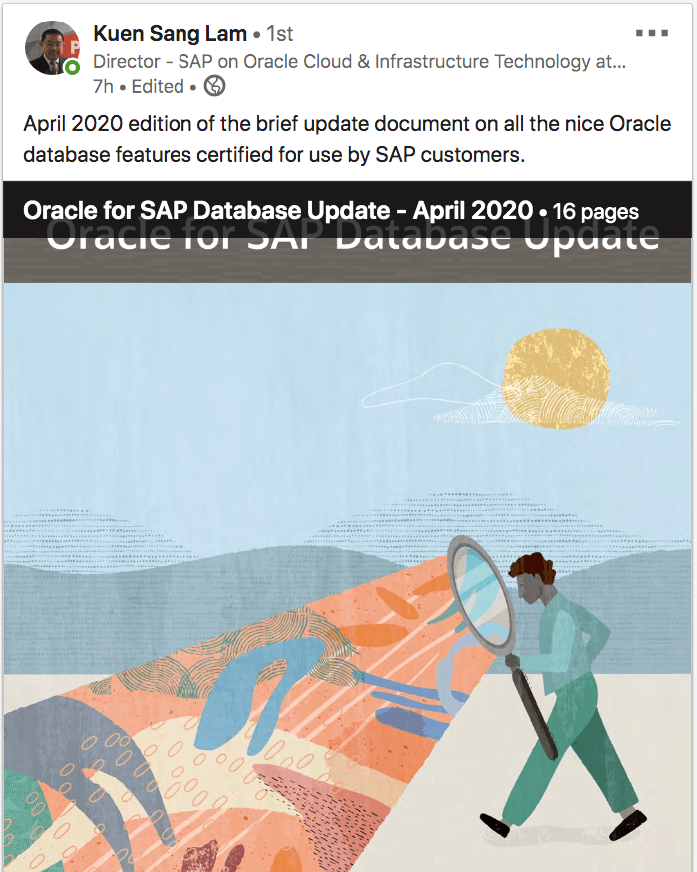
This is a share with some content, but not content created by individual sharing. And of course, it is designed to promote the Oracle database.
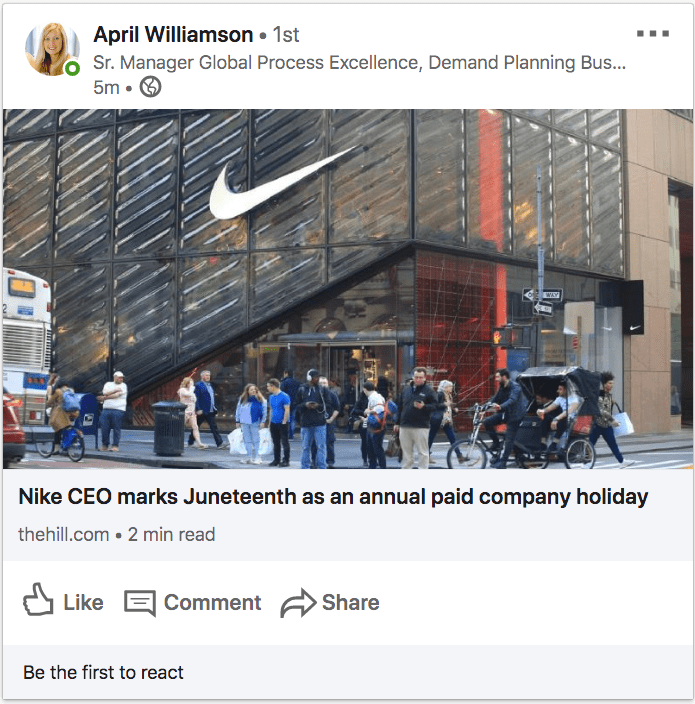
This is a virtue-signaling share. Nike, which uses large numbers of sweatshop laborers and is routinely caught not enforcing standards in overseers factories, wants to tell me how they will support a black holiday.
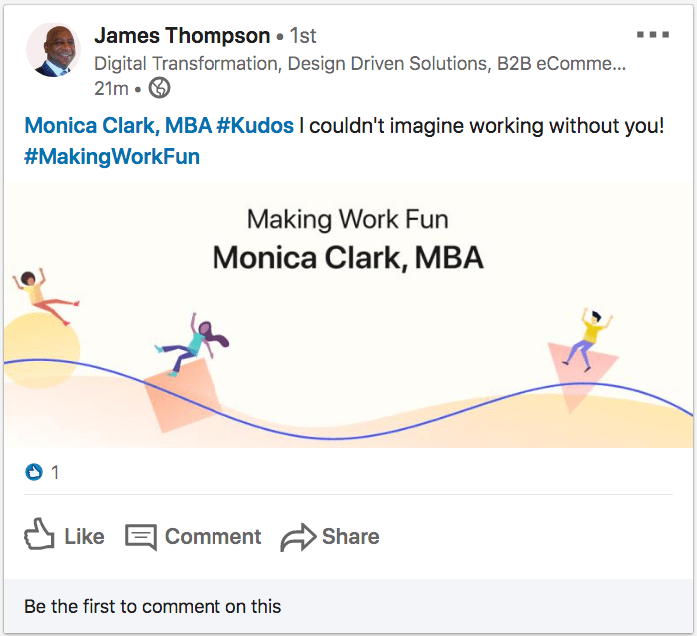
This is a “positivity” share. Positivity shares are quite common. They have nearly no content and say something positive. This is showing public affection for a co-worker and is a highly political action. So any LinkedIn posts illustrate how easy it is for large amounts of the population to be controlled by a cult. This was further reinforced by the response to authoritarianism during covid.
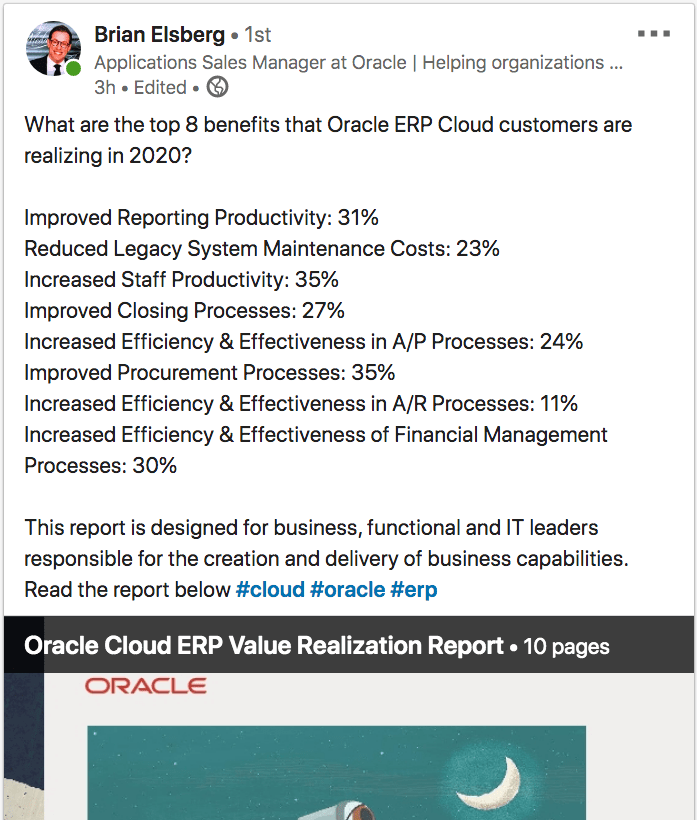
This is another share from an Oracle resource, which is promotional. Again, the individual who is sharing did not write the material. Certainly, all of these statistics were provided by Oracle marketing and are exaggerations and, therefore, false.
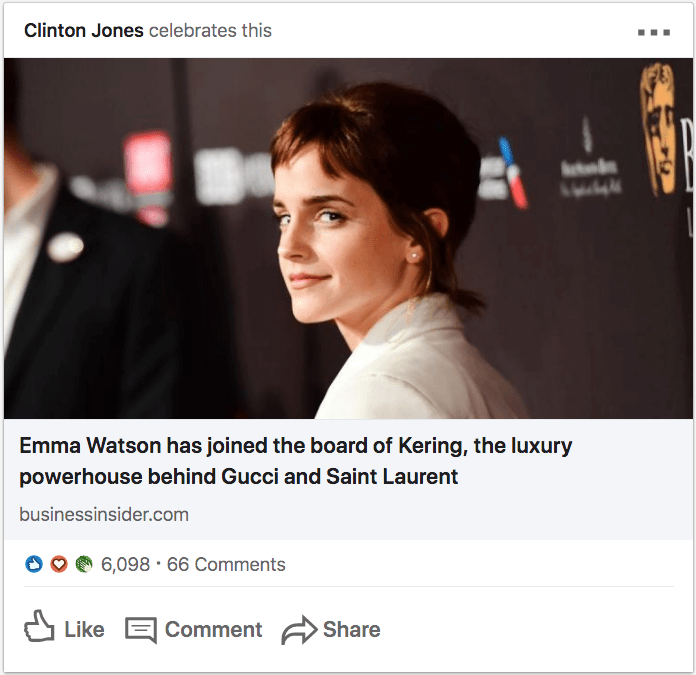
This is a pro-woman share of an article in Business Insider. The relevance of this share is difficult to understand. Why would this company want a young actress on their board of directors in the first place. Because of her business knowledge — no — because of virtue signaling.
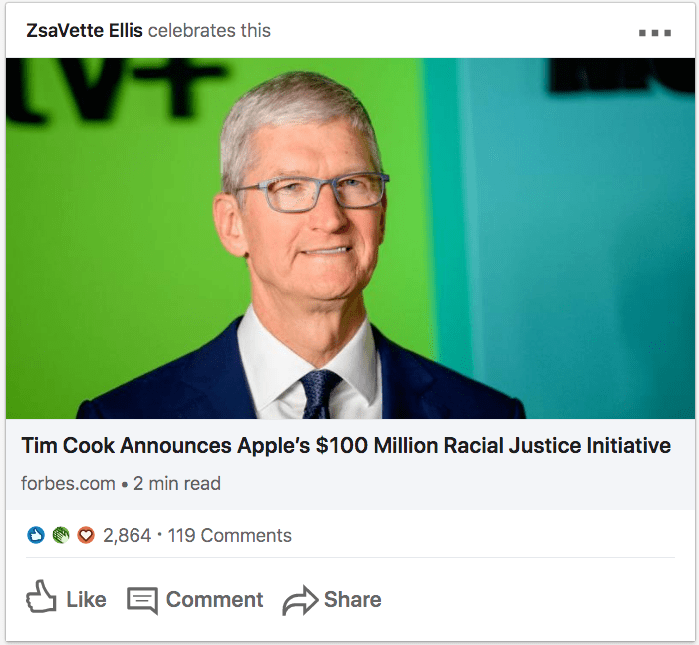
And we finish with another virtue signaling share, this time from Apple. Apple, like Nike, has most of its “employment” — around 90% in overseas factories with low labor standards. But again, Apple needs to virtue about “racial justice” around the BLM current zeitgeist.
What Are These Shares Reminicient Of?
LinkedIn was supposed to be a professional site where professionals share information. However, I recollected an article on Mult Level Marketing I read several weeks prior to going through these shares. I went back to this article to observe similarities with these shares.
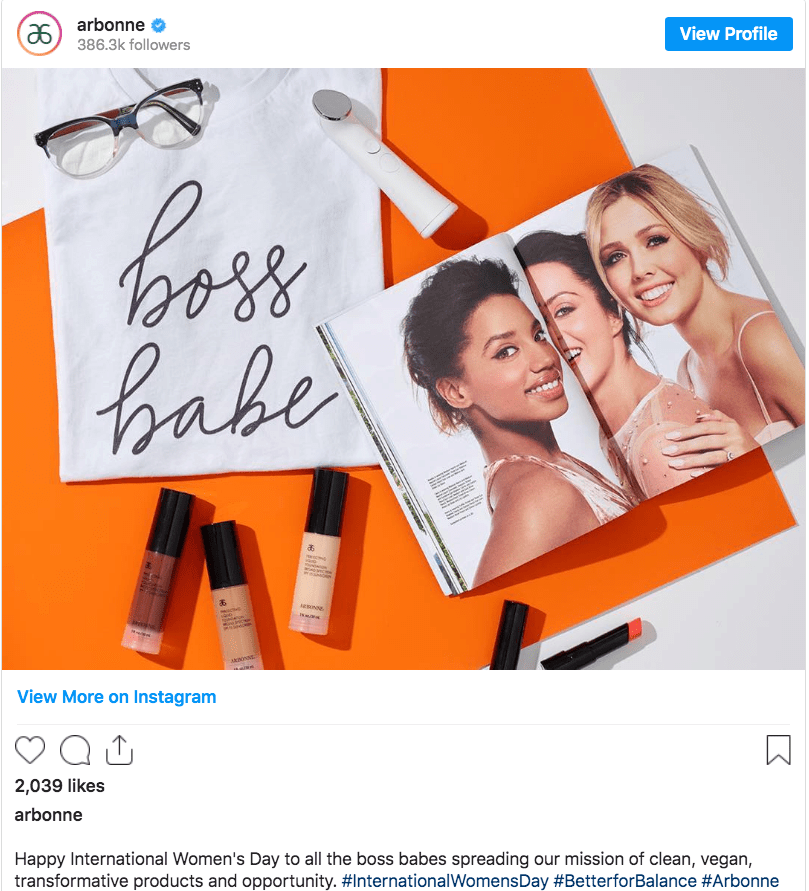
Arbonne is a Multi-Level Marketing company that sells personal care items. They are known to give terrible experiences to those who sign up for this scheme. Like many other MLMs, Arbonne is known to focus more on feelings than the details of the business. Arbonne is about telling those who become part of the MLM to “follow their dreams” and that they can become “boss babes” and not worry about the details. Being a boss babe in an MLM means pushing the MLM’s products and “working for yourself.” MLMs also intersect with self-help gurus — who often speak at their conferences. Naturally, this is a promotion for Arbonne, pretending that they are about International Women’s Day.
The following quotation is instructive of this.
Marketing and training materials for MLMs are often littered with “fake it ’till you make it” mantras and platitudes like “decide today what you want to be tomorrow,” Burnside said. The key word “empowerment” is used in a lot of their training. “They’re connected with the feminist movement to make it feel like this is something that will empower women.” – Huffington Post
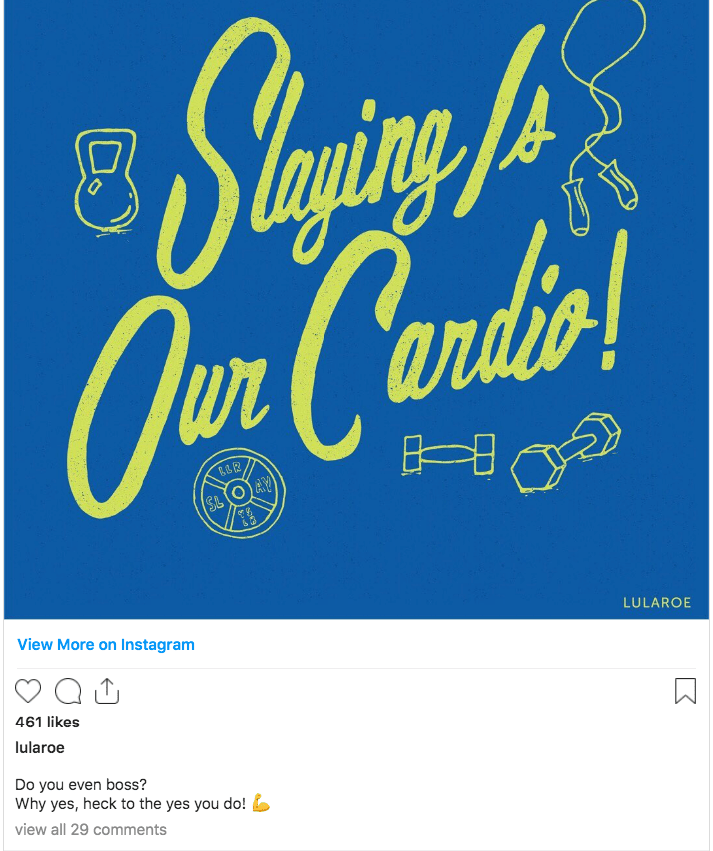
This is a share from LuluRoe, an MLM scheme that sells women’s active clothing. Again, there is virtually no content focusing on positivity and emotion.
Conclusion
Many companies and people with nothing to say outside of virtue signaling, positivity signaling, or promoting themselves are sharing “content.” This content has a positive value for the creator (that is, it can get the money) but has a negative value for readers as it is false or without substance. LinkedIn is one of the main platforms for lying to your followers.
I have scrubbed my feed over time. That is, as soon as a person shares a personal accomplishment, I have “unfollowed them.”
- If a person receives a Six Sigma certificate and places an image of the share certificate, that person is unfollowed.
- If the share is about virtue signaling or other “positive thinking,” I unfollow them again. My original desire to have only shares in my feed by people who have content to share has been unsuccessful because most shares offer such poor-quality content.
Furthermore, when I look at my feed, it makes me less interested in sharing my material, which I have entirely stopped doing. And years after I wrote the article you are now reading I stopped using LinkedIn completely.
I put a lot of effort into the articles I write.
When I compare my shares to the shares in my feed, it is apparent that there are very few shares of any quality. Secondly, because the average share quality is so low and is so easy to create, it means that LinkedIn feed is now suffused with easy-to-create shares. As low-quality shares are so easy to develop, there are naturally many more of them. This is explained in the following quotation.
All social networks sooner or later became totally similar if there no moderation. – Denis Myagkov
I interpret this to mean that they drive to the lowest common denominator with non-status quo ideas driven out. They become entirely neutered and politically correct. Then IBM or Accenture hire “influencers” who then virtue or positivity signal — or shares from IBM or Accenture’s marketing departments provide a positive PR spin on their accomplishments.
And there is another issue — if you make people feel good, they like your shares. This means that positive or virtue-signaling shares will pick up more likes and shares than shares with controversial, harmful, or generally not “feel good” content. However, the problem with “feel good” content is that, in many cases, it is false. See the examples of the Nike and Apple virtue signaling “feel good” shares above.
After this article was published, I found this quote from Alex Geuken, which I thought was quite insightful.
See me See me, quantity over quality. LinkedIn was a professional business network now it has become a Facebook/Instagram clone. post post post, share share share. No effort No quality only to get a like and to be seen. this is a good research of what has become of LinkedIn. Sad to see the progress. Does anyone know of a replacement for LinkedIn? i don’t want to see any more Friday dance or meaningless post about… nothing.
I have removed both apps (Facebook/Instagram) but I see the transformation of LinkedIn and it’s becoming worse by the day. It’s just about the ads and getting the user to mindless scrolling I recommend the documentary on Netflix Social dilemma! Scary but very true. If you are on any type of social media and not the buyer you are the product!
This leads to a larger subject: Big Tech’s incentives in infantilizing the audience.
This is reminiscent of the primary objective of marketing/PR. Marketing/PR attempts to get the audience to accept the discourse being degraded to the most basic level so that the audience is controllable. Ford wants people to buy large pickup trucks. And they can sell more pickup trucks if they can stop the target buyer from asking if
- a.) Can they afford the pickup truck
- b.) Do they really need a pickup truck.

Is this the perfect buyer? Well, they have no higher-level thinking, are all about the present, look out only perhaps a minute or two — and they seek immediate gratification.
Why would you not want to sell to this demographic?
Unfortunately, they don’t have money and are restricted by law from engaging in legal contracts.
What if you can take a full-grown person and turn them into a more regressive state through manipulation?
Once marketers can bypass the neo-cortex’s logical fencing, they can speak directly to the lower-level drives of the audience. This is why emotion is so frequently used in advertising.
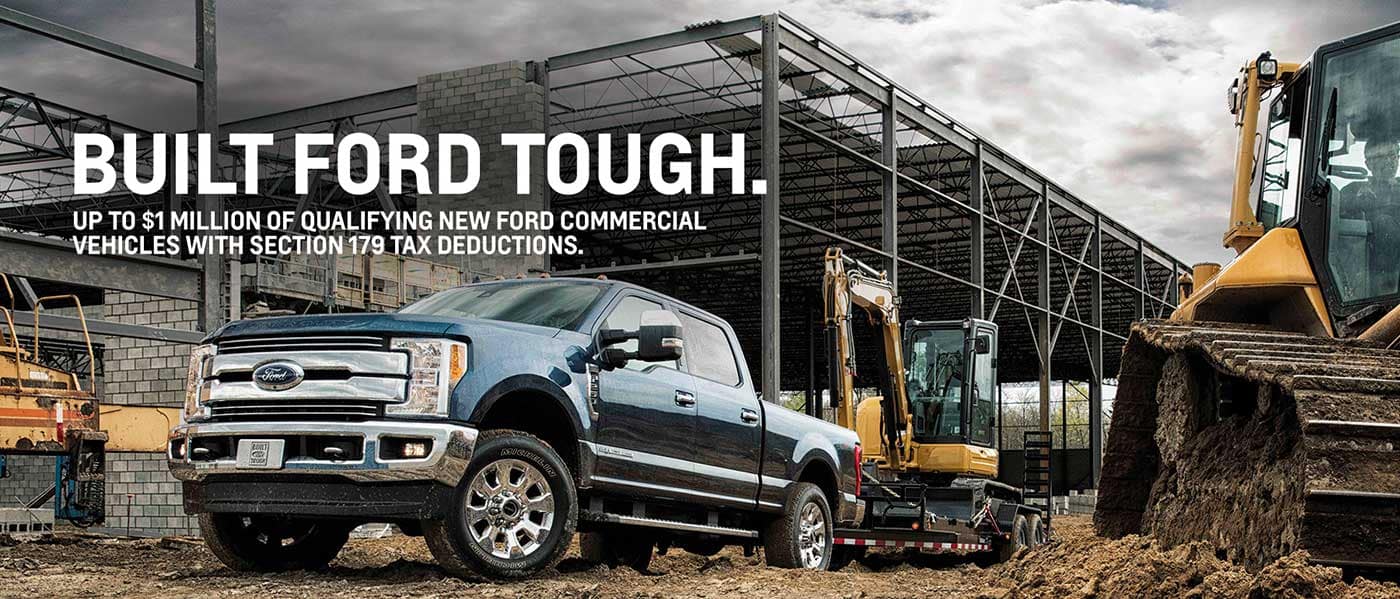
Look how manly this truck is. Don’t you want to be manly also? Do you tow a crane also?
Here are a few questions Ford does not want you to ask.
- How often do you tow a small construction site backhoe?
- What percentage of trucks driving around (if you live in the US) do you see towing things or with anything in the beds of their truck?
Although I have not interviewed them, I think it’s very likely that Ford’s view is “don’t overthink it” and that this is “a great vehicle to drive down to the strip mall to pick up a Jamba Juice.”
When you have a system that has no regulation by a body that looks out for the common good (for instance, protecting the environment, etc..), you end up with a large number of buyers purchasing wasteful products, and where the buyer has been manipulated into buying them by the producer.

This bag has the same function as pretty much any other bag. However, it is several thousand dollars. Notice the association with a famous actress, Marion Cottilard. Advertisers need buyers to see the bag as more than its physical function and as a method for communicating high status to the peer group. This bag says I have spent enormous money on an accessory item made in a Chinese sweatshop. Again, push the message below the neocortex into the limbic system and the reptilian brain.
How does this work specifically?
“You can literally witness this battle going on,” says Ben Hayden, a neuroscientist who studies decision-making. He told me about researchers at Caltech who scanned the brains of people on diets while offering them junk food. A certain region of the brain lit up when the dieters resisted junk food. Hayden says that self-control region is in a tug of war with the parts of the brain affected by ads.
“When advertising comes into the picture, it kind of is the opposite of self-control,” Hayden says. “It encourages you to just go out and buy it, just do it.” – NPR
This is explained further in this quote.
Advertising manipulates you because it influences your subconscious by infiltrating the logical mind that protects the brain regions responsible for faith. Advertising has a big impact on social learning: it introduces models, defines trends and creates traditions! Advertisements impact our identity and our values of influence. The ads made the woman smoke! To better understand the effects of advertising, you need to understand how advertising works … – Gyan deo Mishra
Ford, SAP, Microsoft, and other major corporations require platforms to help them infantilize the audience. In this case, Microsoft owns the infantilizing device to sell its wares and help other corporations sell them.
To answer why LinkedIn is emphasizing shares that are either critical or take real thought, the answer can be found in the fact that it is an advertising platform. To be effective, they must drive the platform content to an infantilizing level.
Counterfeit Shares
What is happening with LinkedIn Shares is the same phenomenon as counterfeiting. Enforcing counterfeiting laws is important because, without this essential regulation, the bad money eventually pushes out the good. It makes people not want to use the currency. LinkedIn has no minimum standard for the effort placed into shares — and because LinkedIn actively promotes shares from wealthy multinationals that generally have nothing to say — they have degraded the sharing environment.
Overall, my feed now looks more like various entities’ PR and marketing departments would like me to read. My LinkedIn feed has devolved to the point where it is almost entirely a marketing feed.
From this, I predict that engagement on feeds will significantly decline. My LinkedIn feed is already more of an irritant or “false” positive when the notification appears than an indication that anything I want to read is shared. I have no insight into the engagement with LinkedIn shares — but what I say might have already happened.